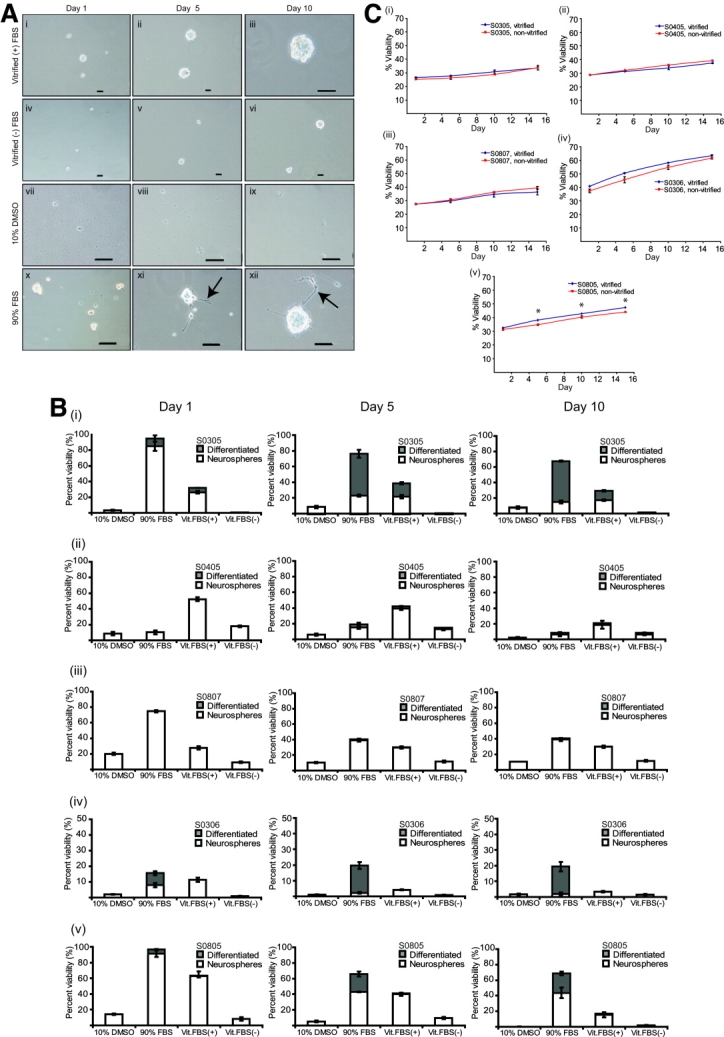Figure 1.

Vitrification results in greater viability and maintains proliferative capacity of tumor neurospheres. Tumor neurospheres were frozen by various methods: vitrification with 20% serum (Ai–Aiii), vitrification without serum (Aiv–Avi), 10% DMSO (Avii–Aix), and 90% FBS (Ax–Axii). After storage in liquid nitrogen for 30 days (vitrification with and without serum, 10% DMSO, and 90% FBS) and up to 2.5 years (vitrification with serum only), the neurospheres were thawed and subjected to morphological analyses while in culture under serum-free conditions supplemented with growth factors. Shown are representative images obtained from one patient's neurosphere line, S0305. Note the appearance of extended processes at the periphery (typical of differentiation) on days 5 and 10 of the sample frozen with 90% FBS (arrows). Scale bars = 100 μm. (B): Morphological analyses in (A) were quantified. (A, B): Experiments carried out in duplicate. (C): Patients' tumor neurospheres were subjected to vitrification, and proliferation rate using a standard AlamarBlue assay (AbD Serotec, Oxford, United Kingdom, http://www.ab-direct.com) was determined after thawing. S prefix represents tumor neurospheres, and numbers represent codes assigned to specimens (∗, p < .05). Abbreviations: DMSO, dimethyl sulfoxide; FBS, fetal bovine serum; Vit. FBS, vitrification with fetal bovine serum.
